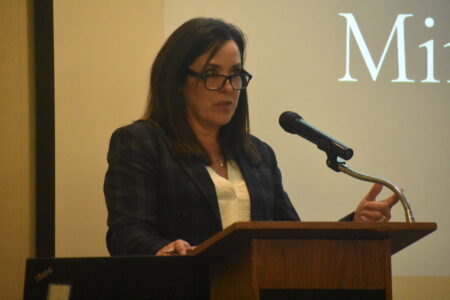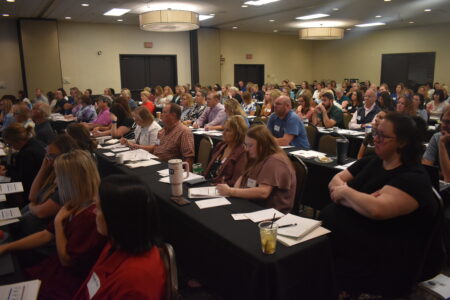What to do with 20 weeks of paid leave?
Planning for Minnesota Paid Leave Law
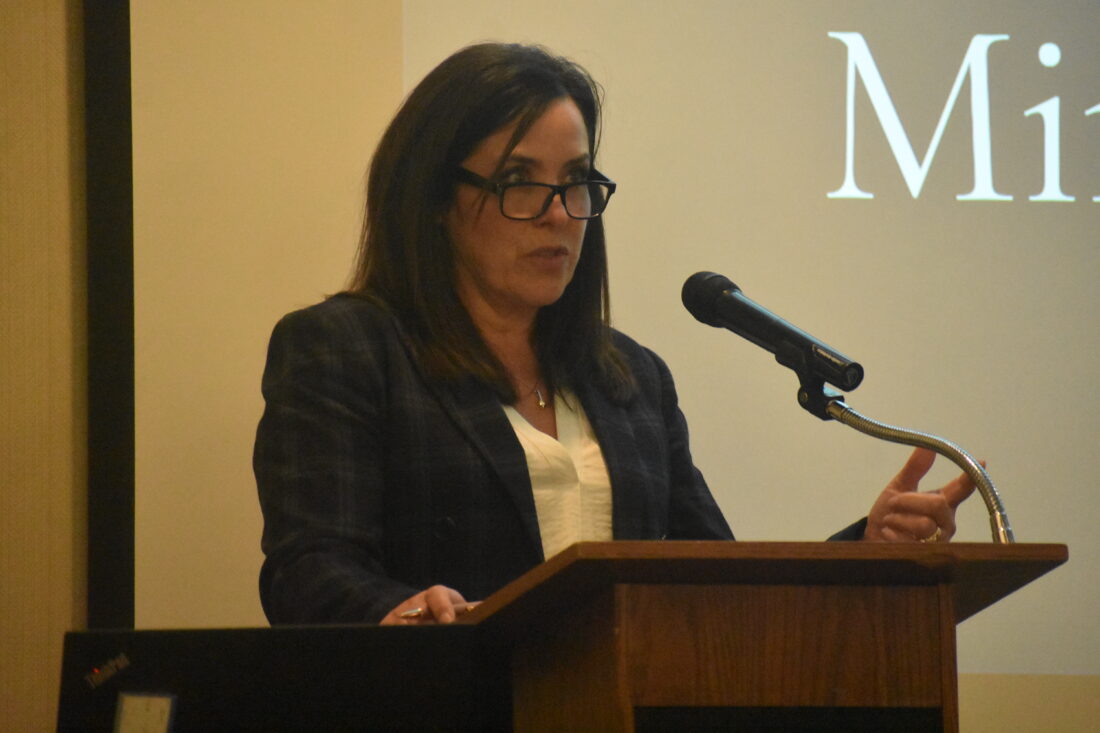
Blethen Berans employment law attornery Julia Ketcham Corbett gives employers a list of things to prepare for with Minnesota’s new Paid Family and Medical Leave Law that takes effect Jan. 1, 2026
NEW ULM – On January 1, 2026, Minnesota’s new Paid Family and Medical Leave Law will take effect, impacting nearly every business in the state, and many are struggling to prepare for the change.
On Wednesday, the New Ulm Area Chamber and Blethen Berens Law Firm collaborated on a seminar to help area employers prepare for this major shift in employment law.
New Ulm Chamber President Sarah Warmka said Minnesota’s Paid Leave Law was a topic of discussion at several state chamber conferences. Warmka reached out to Blethen Berens Law firm about collaborating on a seminar for area businesses. Blethen Berans had already been considering doing this, as many of their clients had questions about it.
In total, 170 individuals in the New Ulm community registered and attended the seminar held at New Ulm’s Best Western Plus. During the seminar, Blethen Berens Attorneys’ Julia Ketcham Corbett, Jacqueline Tousley-Adelman, and Abdo CPA Leah Davis provided a summary of what to expect from the new Minnesota Paid Leave Law and how to best plan.
What is Minnesota’s Paid Family Medical Leave Law?
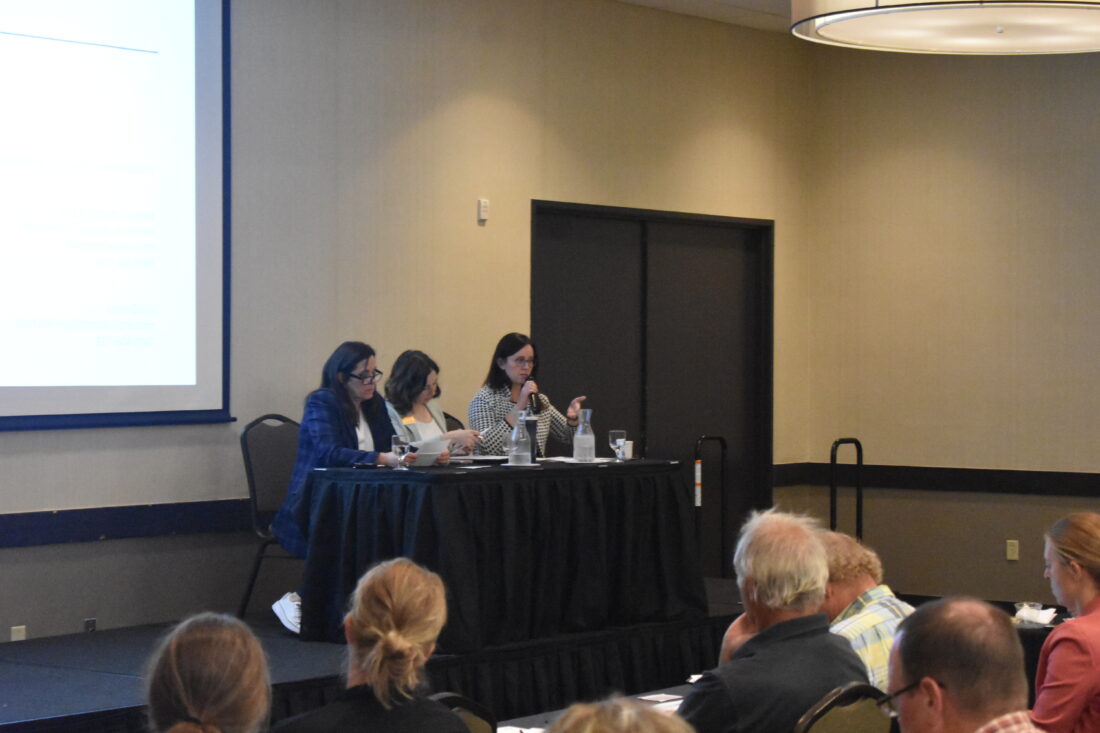
Blethen Berens Attorneys' Julia Ketcham Corbett, Jacqueline Tousley-Adelman, and Abdo CPA Leah Davis answer questions on Minnesota Paid Leave Law during an information seminar held at the New Ulm Best Western Wednesday.
“The general goal of Minnesota Paid Leave is to support Minnesota employees when they need time to care of themselves and loved ones. It functions very similarly to Minnesota’s unemployment insurance law,” Tousley-Adelman said during a summary overview of the law.
Tousley-Adelman said Minnesota Paid Leave has two separate sections. One is for personal medical leave and the other is for family leave. The Medical Leave category is when the employee themselves has a medical condition that requires a leave of absence. The Family Leave in when an employee needs to leave to take care of a family member.
Each employee is allowed up to 12 weeks of Medical Leave and 12 weeks of Family Leave; however, an employee qualifying for both medial and family leave is limited to a maximum leave time of 20 weeks.
“You can’t take 24 weeks,” Tousley-Adelman said. “It’s 20 weeks.”
Through the law, employees receive a portion of their wages while on leave and job protection when they return from leave.
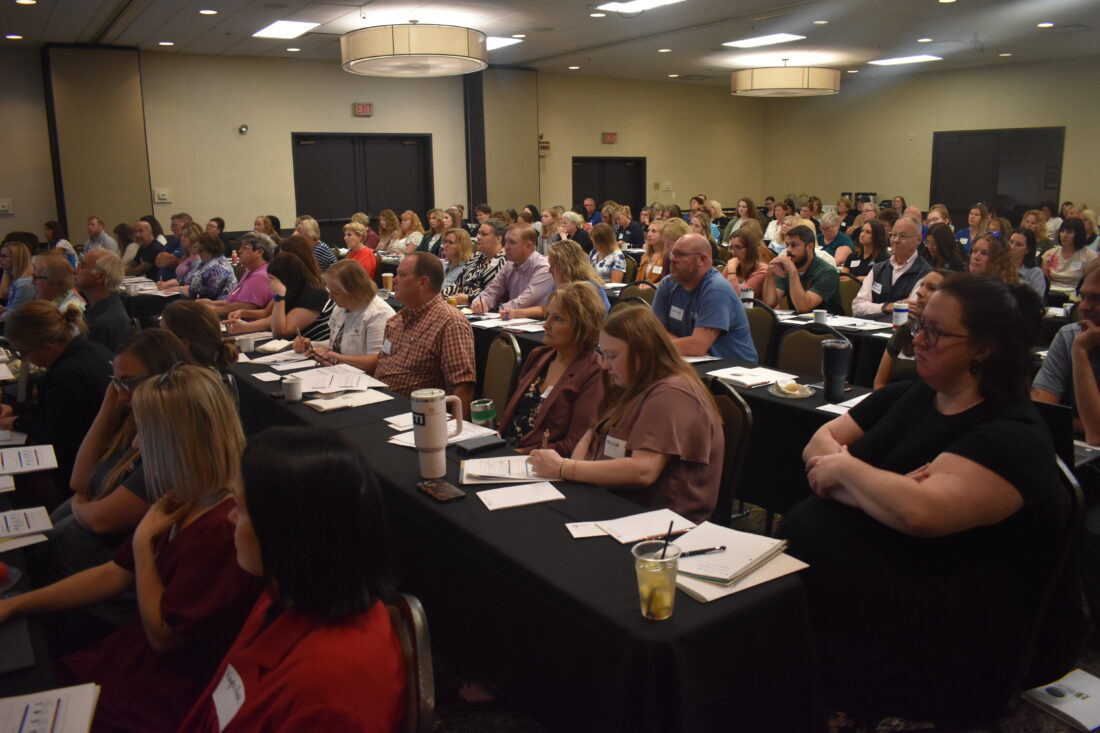
The recent seminar hosted by New Ulm Area Chamber and Blethen Berens law firm on Minnesota Paid Leave Law proved extremely popular with 170 individuals registering for the event.
“Depending on an employee’s income they can receive up to 90% of their usual wages as benefits under Minnesota Paid Leave,” Tousley-Adelman said. “The lower the income of the employee, the higher the percentage of wages that are replaced.”
The program is funded by premiums made up of contributions from employees and employers. The initial premium rate is 0.88% of wages. Employers must contribute at least 50% (0.44%) of the premium, but could pay the full premium. Employees can only be asked to contribute up to 50% of the premium. The employers pay the premium directly to the state. After an employee applies for leave, payments are sent by the state directly to the employee.
Tousley-Adelman said Minnesota Paid Leave is different from Earned Sick and SafeTime (ESST). The ESST is paid by the employer to the employee at the employee’s base pay. In addition, ESST is used for less significant events that do not qualify for paid leave. Paid Leave requires a qualifying condition that lasts for seven days for an employee to qualify.
An employee using Paid Leave must notify their employer of their intent to take leave. Tousley-Adelman stressed that giving notice was not optional; it was a required part of applying for paid leave. If an employee fails to notify their employer, their application for paid leave could be delayed.
Employees must submit an application for paid leave, which is adjudicated by Minnesota’s Paid Leave division.
During the seminar, paid leave for childbirth was brought up multiple times, as it is the most likely scenario in which an employee would use the full 20 weeks of leave.
Tousley-Adelman explained an employee could take eight weeks to recover from a pregnancy and then take 12 weeks of family leave for bonding time with the child.
Employees are eligible for bonding leave during the first 12 months after a child is born. If an employee had a child in June 2025, they would be eligible to take bonding leave the moment the law goes into effect Jan. 1, 2026. Employees could begin applying for bonding leave as early as Dec. 1.
Which employees are eligible for Minnesota Paid Leave?
If the employee lives in Minnesota, they are eligible for Minnesota Paid Leave. They are also eligible if they work 50% or more within Minnesota within the last 12 months.
Tousley-Adelman said most Minnesota employees will be covered by this law, including full-time, part-time, agricultural workers, most seasonal workers, student workers, employees of religious organizations, first responders, and elected and appointed officials.
Independent contractors, self-employed individuals and tribal nations are not covered by the law but can opt in. Federal employees, exempt seasonal employees and railroad employees are not covered and cannot opt in.
Tousley-Adelman said employers cannot opt out of Minnesota Paid Leave, but employers can request an equivalent plan that matches the state plan.
How should employers prepare for this legal change?
Corbett said the first step employers should take is to have multiple paid leave administrators. The reason for two is to give a backup in case the paid leave administrator is on leave themselves.
She also recommended that companies begin updating their policies to reflect the changes, such as a call-in policy for sick employees.
The Minnesota Paid Leave law requires employees to notify employers about taking leave, but the law also prevents employers from retaliating against an employee for taking leave. In other words, an employee cannot be fired or demoted for taking leave. However, if an employee is not following the established company call-in policy, the company may discipline for violating the policy.
Corbett said the job retention clause only applies to employees with the company for 90 days. The company is not necessarily required to bring the employee back if they have been their less than 90 days. However, to avoid accusations of retaliation, she recommended having early employee performance reviews to protect the company from wrongful termination lawsuits.
“It is still not going to prevent abuse but it is going to help,” Corbett said.
Corbett said one of the greatest challenges of the new law will be planning for lengthy absences. An employee who has worked for a business for more than 90 days is granted job protection. Once that person comes back from leave, they get to come back to the job.
How will a company fill in for them during the leave? Hire a replacement employee during this leave? If so, is that replacement employee terminated once the original employee comes back? How will the company pay unemployment for the terminated employee?
Corbett suggested looking to temp agencies for temporary employees. In larger companies, the work could be spread out among other employees unless it is a specialized position.
“We don’t have a glut of skilled people sitting around waiting for jobs,” Corbett said, “and who wants to take that job for three months knowing they are out of the job after three months.”
Corbett emphasized that small business employers are not exempt from Minnesota Paid Law and she believed it could be challenging for businesses that have a small workforce without dedicated Human Resource staff and cannot adjust the work if an employee takes 20 weeks of leave.
Is the paid leave law set in stone?
Though the law goes into effect next year, the state has been preparing to roll out the new law for two years. In those two years, the law had already seen changes and Corbett believed it was possible to see more adjustments to the law within the next two years.
Asked how she would modify the Minnesota Paid Leave Law, Corbett gave two changes. The first was to exempt small businesses from the law. The second was to limit leave time to a maximum of 12 weeks instead of allowing 20 weeks split between medical and family leave.
She encouraged employers to talk with their local legislators on how the Minnesota Paid Leave Law impacts their company.
In talking with legislators on both sides of the political aisle, she believed they were open to change.
“I think there is at least an appetite for modification,” Corbett said.
It is unlikely to see modifications to the law before the start of 2026. Corbett urged employers to begin planning now before the changes went into effect, but she also recommended that employees look into it as well. The law is giving Minnesota workers broad benefits to help support them during major life events.
She said the Minnesota Department of Employment and Economic Development (DEED) website provided further information on the law.
This was the first of three seminars Blethen Berans will hold on the paid leave law. The next seminar will be held at 8:30 a.m. Friday, Aug. 22, at The Venue in Mankato. The third is 9 a.m. Sept. 10, the Best Western in Fairmont.
- Blethen Berans employment law attornery Julia Ketcham Corbett gives employers a list of things to prepare for with Minnesota’s new Paid Family and Medical Leave Law that takes effect Jan. 1, 2026
- Blethen Berens Attorneys’ Julia Ketcham Corbett, Jacqueline Tousley-Adelman, and Abdo CPA Leah Davis answer questions on Minnesota Paid Leave Law during an information seminar held at the New Ulm Best Western Wednesday.
- The recent seminar hosted by New Ulm Area Chamber and Blethen Berens law firm on Minnesota Paid Leave Law proved extremely popular with 170 individuals registering for the event.

